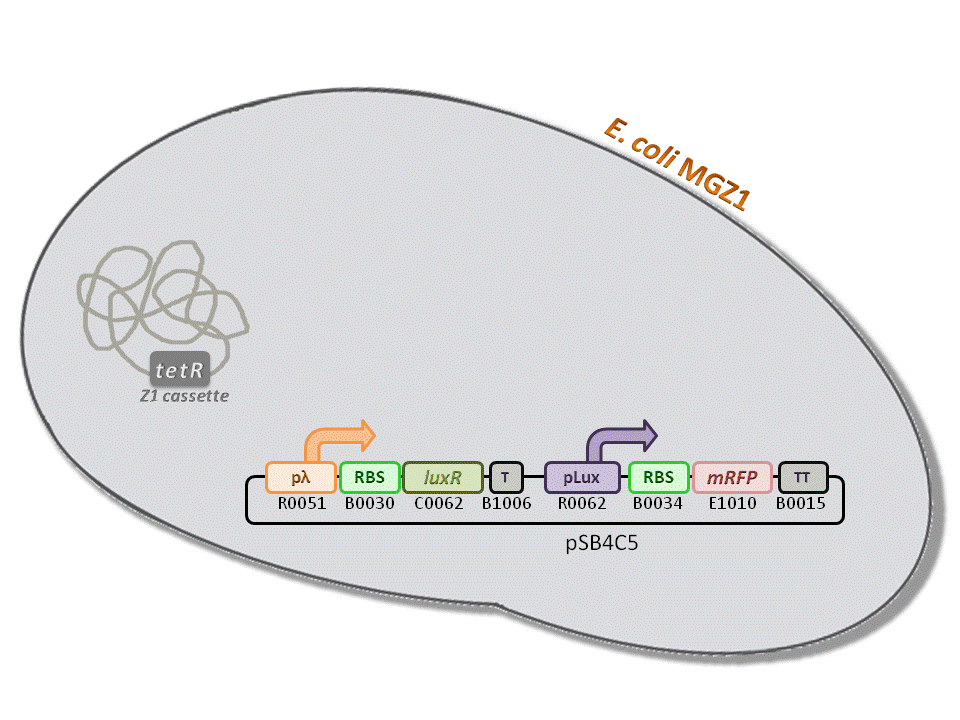Data Page
Data For Our Favorite New Parts
BBa_K516210
BBa_K516210 (pTet-RBS30-LuxI) - HSL synthesis device, aTc inducible.
This is one of four systems with different RBSs (output modulation) tested to quantify the produced HSL. The results obtained by testing this part allowed the identification of important model parameters to predict the behavior of the whole CTRL+E circuit.
BBa_K516334
BBa_K516334 (pLambda-RBS30-LuxR-T-pLux-RBS34-mRFP-TT) - 3OC6-HSL biosensor, mRFP output
This is one of the four biosensors (different RBSs) built and characterized. This measurement system senses the HSL concentration in the medium and responds with an RFP output. Several RBSs have been used to modulate the output range. This is a simple measurement system, used to identify important model parameters used to simulate the behavior of the whole circuit.
BBa_K516230
BBa_K516230 (pTet-RBS34-mRFP-TT) - aTc inducible, mRFP output
This is one of the four pTet measurement systems (different RBSs) built and characterized. This measurement system senses the aTc concentration in the medium and responds with an RFP output. Several RBSs have been used to modulate the output range. This is a simple measurement system, used to identify important model parameters used to simulate the behavior of the whole circuit.
Data For existing Parts
RBSs from the community collection
RBSs were used for the fine tuning of CTRL+E. Different experimental conditions were assayed.
Estimated efficiencies in pSB4C5 plasmid with -RBSx-mRFP-TT coding sequence under the control of the specified promoter:
| RBS | effpLux | effpTet | effJ23101 | Declared efficiency |
| B0030 | 0.40 | 1.6814 | 2.45 | 0,6 |
| B0031 | 0.01 | ND | 0.04 | 0,07 |
| B0032 | 0.19 | 0.4193 | 0.40 | 0,3 |
| B0034 | 1 | 1 | 1 | 1 |
Estimated efficiencies in pSB4C5 plasmid with pTet-RBSx-GeneX-TT, with GeneX=mRFP, AiiA or LuxI:
| RBS | effmRFP | effAiiA | effLuxI | Declared efficiency |
| B0030 | 1.72 | 0.53 | 0.45 | 0,6 |
| B0031 | 0.03 | 0.83 | 0.028 | 0,07 |
| B0032 | 0.37 | 0.50 | N.D. | 0.3 |
| B0034 | 1 | 1 | 1 | 1 |
BBa_K081022
This device has been characterized with several RBSs in order to modulate the output range. In this way, this device can be used to tightly control the expression of downstream encoded protein from a very weak production (using weak RBS) to a very intensive production (with strong RBSs).
 "
"



